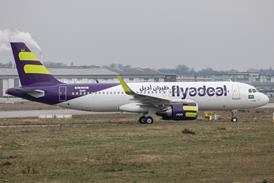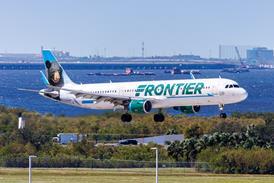The US National Transportation Safety Board (NTSB) has reclassified the shedding of a four- by five-foot composite wing panel on a US Airways Boeing 757 during a 22 March flight from Orlando to Philadelphia as an “incident” rather than an “accident”.
Based on crew interviews and information retrieved from the aircraft’s flight data recorder, investigators have determined that there had been no “substantial change to Flight 1250’s handling characteristics” after the panel separated from the wing somewhere over the State of Maryland that morning. “Because of this, the NTSB has reclassified this event from an accident to an incident”, the board explains.
While efforts to find the panel have been unsuccessful, NTSB says an examination of remaining components on the wing revealed that metal fatigue had caused clips that hold the panel in place to fail over a period of time, the third and final clip breaking on the incident flight.
An Airworthiness Directives (AD) addressing the problem had been issued in 1991. Eastern Airlines, the now-defunct airline that operated the incident aircraft at the time, had complied by installing redesigned clips that ultimately failed on Flight 1250, NTSB says.
A fleet-wide inspection of 757s at US Airways revealed “problems with wing panel fasteners on several other aircraft,” says the NTSB, adding that the aircraft have since been repaired and returned to service.
“The Safety Board is continuing to evaluate the design, installation, inspection and maintenance of the failed components to determine the cause of the failure and the impact on the 757 fleet,” the Board states in a status report released today.
Source: flightglobal.com's sister premium news site Air Transport Intelligence news
Source: FlightGlobal.com























